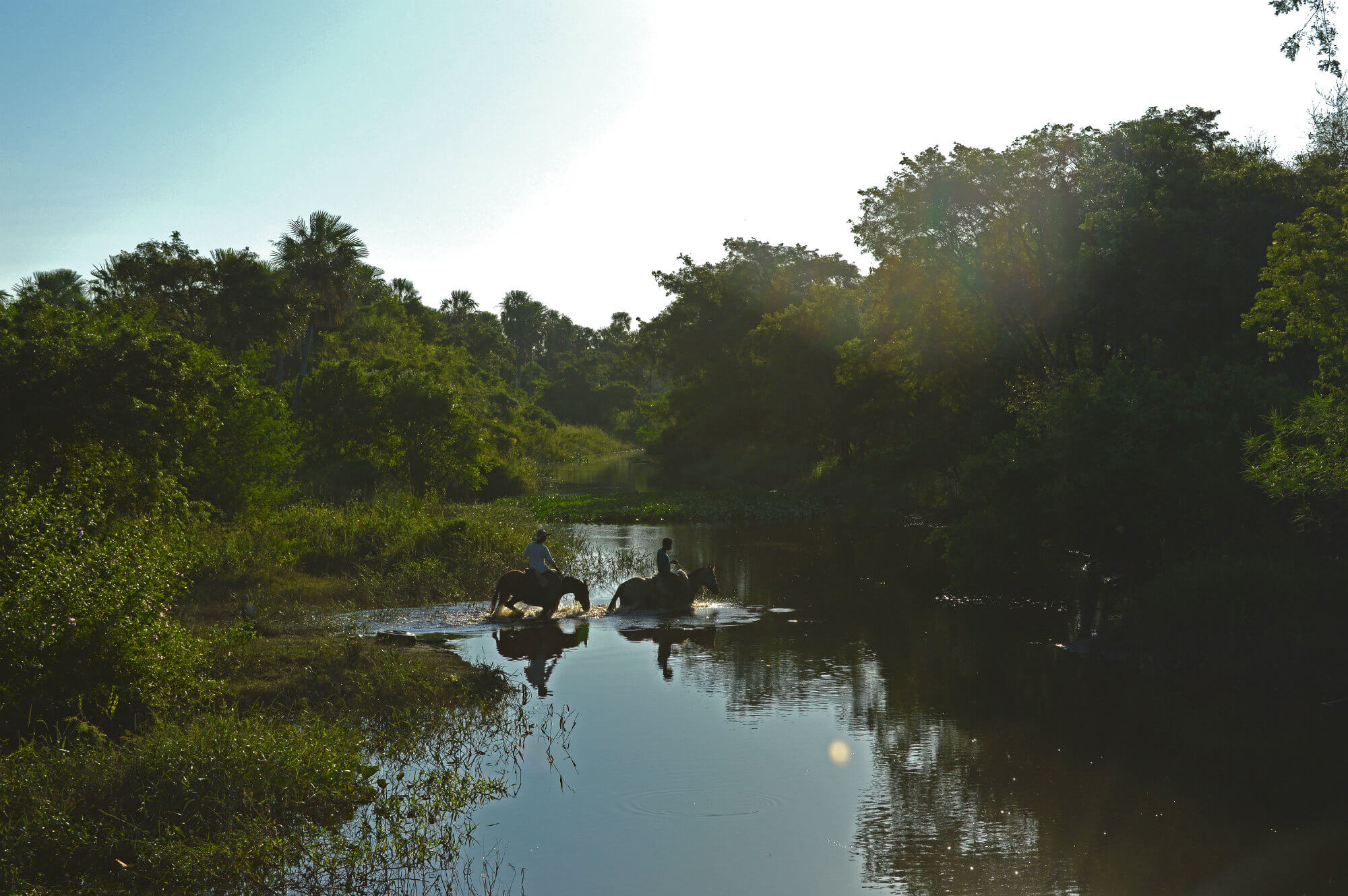
Agripina Fernández berates us for only coming to visit her community Yexwase Yet for a few hours. “It would take us at least two days to tell you everything we have been through,” she says, her face emanating the quiet but unwavering determination characteristic of the Enxet Sur Indigenous Peoples of Paraguay.
Today Yexwase Yet (ex-San Fernando) is celebrating. After an 18 year struggle they have finally received legal title to 10,030 hectares of their ancestral land in the Chaco region of Paraguay. Much of the territory is virgin forest empowering these 96 families to combine traditional hunting and gathering activities with small scale agriculture. It is a symbol of hope in a country and region where the agro-industry has wrought unimaginable environmental degradation and mass-displacement of small farmers and Indigenous communities.
Situated on the border areas of northern Argentina, southwest Paraguay and southeast Bolivia, the South American Chaco is the largest dry forest in the world. Spanning 1 million square kilometers–similar in size to Colombia or Egypt–the region is home to 25 different Indigenous Peoples including the Guarani, Wichi, Qom, Enxet Sur and Sanapana; it is one of the most culturally diverse regions in Latin America.
Its dense vegetation and limited access to water alongside the fierce resistance of Indigenous Peoples also makes it one of the very last regions of South America to be conquered by the Spaniards. While the Aztec and the Inca empires fell in 1522 and 1534 respectively, it was not until the 1820s onwards that the Chaco came under the control of the colonial empire and Indigenous Peoples began to lose large portions of their land. However, even then, as a region lacking in resources such as silver or gold and famous for its antagonistic terrain, it was of little interest to the outside world.
Today that has changed.
Having ravaged through the south of Argentina and east of Paraguay with mass scale soy production and cattle ranching, the agro-industry has begun to invade the Chaco. In the past four years alone, deforestation has averaged at 1,700 hectares per day – an area equivalent to 1,700 football fields. Limited access to water due to months of chronic drought do nothing to deter them – after trying 350 different varieties of genetically modified seeds Montsanto has finally developed a variety of drought resistant soy seeds.
Nowhere has the effect of this onslaught been felt more than in Indigenous communities. Whether it’s being pushed on to tiny portions of land surrounded by wire fences without access to water or resources to adapt and find new ways of production or forced to migrate to the slums of urban centres, this sudden and drastic loss of ancestral territories has had a profound effect on them increasing levels of poverty and social exclusion.
But they have not lost their sense of resistance and tireless determination.
With support from national and international non-governmental organizations, Indigenous communities have begun to develop complex legal claims for the return of ancestral lands. Argentina and Paraguay adapted their constitutions during the 1990s to recognize Indigenous rights to collective ownership of ancestral lands. The process is plagued with bureaucracy and delays that can take over three decades to resolve –as in the case of Yexwase Yet who began to occupy parts of their ancestral land in 1997.
“Most of us grew up working on cattle ranch estates –although our grandparents remembered times of abundance and freedom. Gradually the estate owner began to distance himself from Indigenous People and we were let go,“ Gabriel Fernandez, one of the leaders of Yexwase Yet, tells me. “We came here to this piece of land and it was a local priest who told us that we should fight to make it ours, to recover it and build an autonomous life here.”
18 years later, that dream has come true. But it hasn’t been an easy victory. Located 80km from a paved road and without any means of transport, access to electricity or even a mobile phone signal, Yexwase Yet is surrounded by private cattle ranch estates who made numerous attempts to evict them. Their struggle has been exhausting and it shows in the faces of its inhabitants as they tell stories of their countless visits to the capital Asuncion to put pressure on various government offices, of their long marches to demand justice and the constant struggle to build a community.
Today Yexwase Yet has a tiny school built from logs. It doesn’t have any books or utilities; but 31 children still receive classes from Ana, a member of the community who receives no salary. Hunting and gathering continues to be the main source of food for the community alongside fishing and some crops of watermelons and squash. If someone falls ill and traditional medicines fails, the 80km trip along an unpaved road is made to a phone to call for help.
But amidst the exhaustion, there is also a sense of hope and glint of a new future. On 10 December during an official ceremony in Asuncion, President of Paraguay Horacio Cartes handed over legal title to Gabriel Fernandez and other leaders in representation of all of Yexwase Yet. Just weeks later, a retired Paraguayan football star and his family attempted to move on to part of the 10,030 hectares claiming he had recently purchased it to build a cattle ranch estate.
“We called the police and the State prosecutor immediately and they told the footballer to leave, that he had no right to be there,“ says Gabriel, “for once it was someone else being evicted. Now the land is really ours.”

Indigenous Peoples are putting their bodies on the line and it's our responsibility to make sure you know why. That takes time, expertise and resources - and we're up against a constant tide of misinformation and distorted coverage. By supporting IC you're empowering the kind of journalism we need, at the moment we need it most.